Tutsi.Basketry – World Class Weaving
PRIMITIVE - Friday, August 11, 2017 |
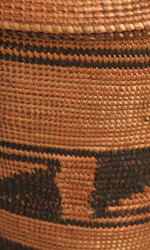 |
|
|
|
||
由格伦joffe&misaki imagawa
有一个古老的文明,没有吗t create and utilize baskets? It doesn’t seem so, which means basketry may be one of the oldest art forms in human history. Unfortunately, the natural fibers historically used to create baskets commonly degrade over time, making it difficult for historical samples to be preserved. Yet, there is proof of basketry from ancient times. For example, archaeologists have discovered ancient pottery fragments containing the imprints of basket weaves, presumably used to mold the pots and shedding light on at least one use for baskets. Although basketry served many functions in the past, today it is seen as something different than a utilitarian necessity in the lives of people. In the western world it is seen more as craft and decoration; however, in certain instances it has been elevated to a recognized art form and a complete collecting category in the world of art.
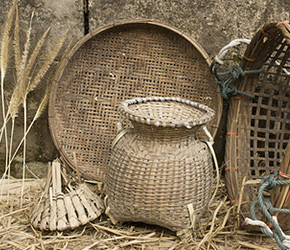 |
|
|
|
When it comes to basketry, the Tutsi people of Rwanda, Central Africa are considered some of the finest weavers in the world. As much a social class as a tribal group, the Tutsi have been likened to an aristocracy composed of military leaders, landowners, chiefs and priests. As a cohesive group they held high status and dominated the areas of their residence for many generations. When it comes to traditional African art and collectibles basketry is often overshadowed by wood, bronze and terra cotta artwork; however, Tutsi hand-woven baskets have become a recognized collectible in the greater art world, and the “basket world,” in particular. This may be because Tutsi weavers traditionally performed their craft in service to high status, which is another way of saying “only the best will do.” Tutsi baskets combine practicality with exceptionally fine craftsmanship and exquisite decorative elements.
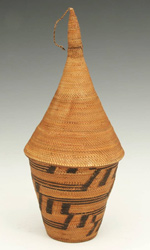 |
||
|
|
||
在Tutsi中,织造是艺术表达的主要形式。传统上,部落的精英妇女将坐落在一起,努力编织篮子需要几个小时的仔细工作来完成。这是女性的公共时间,他在篮子里,珠子工作和刺绣工作,而Tutsi音乐家在背景中为他们发挥了旋律。虽然大多数带有独特锥形盖子的篮子均在日常生活中使用并用于日常生活中,但较小的迷你篮子通常作为储存贵重物品的地方作为婚礼礼物呈现。然而,篮子不是Tutsi女性编织的唯一东西。Tutsi家庭装饰着各种手工编织艺术品,包括地板覆盖物,面板,挂毯,装饰屏,甚至瓶盖和船只盖。所有这些物品都将充满活力的几何图案带入他们的家中。
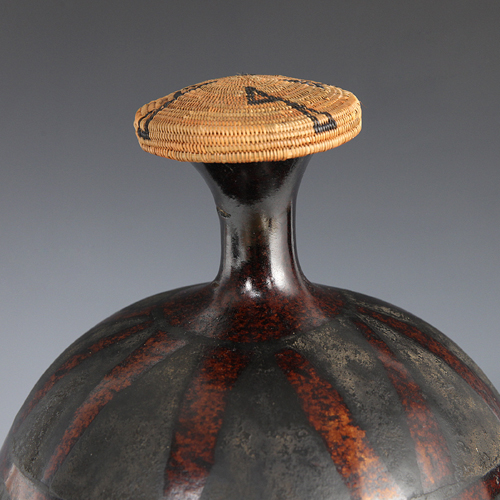 |
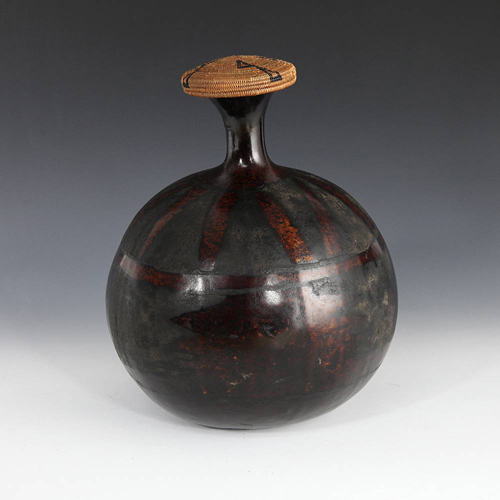 |
|
|
|
||
While women created baskets and tapestries, the men of the tribe were also weavers. They were in charge of building large, woven architectural structures such as granaries and dwellings. Beehives, fishnets and fences were also woven. The Tutsi utilized a variety of plant fibers including grass, bamboo, reed, raffia, banana leaves and papyrus trees to create weaving materials. These fibers were prepared by stripping, soaking, beating and drying them over the course of several weeks. They were then selectively dyed using black color obtained by boiling banana flowers and red from the root and seeds of the Urukamgi plant. Colored fibers were then woven in contrasting patterns against natural fibers. The motifs of these patterns might appear to be random zigzags or triangles, but Tutsi designs have names and represent valuable items such as cowrie shells, the tips of arrows, body parts, and other more abstract concepts.
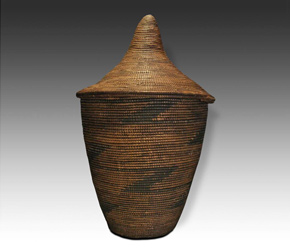 |
|
|
|
Despite its long and intricate history, very few Tutsi baskets remain. Years of violence between the Tutsi and the neighboring Hutu tribe during Rwanda’s colonial and post-colonial eras led to the destruction of many villages, homes, and the artwork that once adorned them. During those tumultuous years – which continued as late as the mid 1990s – the art of basketry was essentially lost. Yet, since the end of the conflict it has been revived. Today, basket weaving among the Tutsi honors traditional designs as well as the meticulous quality that made it such a sought after art form, prized by the Tutsi and collectors alike. Each piece mirrors the nimble movements of elite Tutsi women from the past who wove delicate treasures and an amazing artistic history strand by strand.